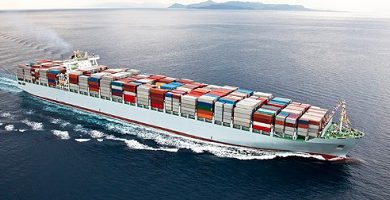What is productivity?
We explain what productivity is, the types that exist and factors that affect. Also, why is it so important and examples.
-
What is productivity?
When talking about it, we refer to the economic measure determined by the comparison between the goods or services produced, and the expectation or the minimum indispensable production quota. Or said in simpler terms: it is the relationship between what has been produced and what needs to be produced , taking into account the factors and inputs necessary to start the process.
Thus, certain systems, processes or even workers can be more or less productive , based on their performance (the amount of products obtained in a given period of time) and their efficiency (the amount of resources they invest in obtaining the product) . In any case, the greater the productivity, the greater the profitability , that is, the greater benefits, so that every form of organization or company always seeks to increase its productivity margins by evaluating its production schemes .
Thus, in many cases productivity increases when significant changes are made in the production chain , which means that it can be a consequence of strategic decisions.
-
Types of productivity

Its three types of are usually recognized:
- Labor productivity. Also known as productivity per hour worked, it has to do with increasing or decreasing performance in favor of obtaining the final product.
- Total factor productivity (PTF). Increase or decrease in performance due to the variation of one or more of the factors involved in production, such as labor, capital or knowledge . It is also associated with technology and technical efficiency in relation to interannual variations or the growth rate of the company.
- Marginal productivity. Also called “marginal product” of the input, it is the variation experienced in the production of a good, when only one of the factors involved in its production is increased, while the rest remains constant.
-
Factors that affect productivity
- Factors attributable to non-working designs and inputs. That is, those that have to do with the material elements, but not with the process itself but with the design and maintenance of the elements, such as the design of the products and services, the stability of the designs , the quality of the materials premiums , the quality and maintenance of the machinery, the quality expectation of the final product and the size of the company.
- Factors attributable to the organization of work. Those that concern the structure and operation of the organization, such as the layout and use of the workspace, the specific method of work, the planning of inputs, the environment, or working times.
- Factors attributable to workers. Those that have to do with the work force or human capital, such as the educational training of workers , their physical state during working hours, their motivation towards work and their punctuality.
- Factors attributable to external conditions. Those that do not have to do with the interior of the company per se, but with foreign elements. Such as marketing and the needs of the consumer market , the variables of the economic environment, or the internationalization of the final product.
-
Importance of productivity

Productivity is a key element in the survival of companies and organizations . First of all because of its direct impact on profitability, given that the increase in productivity margins usually results in an increase in the final profit ; and secondly, because it also has to do with the management of the organization’s resources, such as material inputs, energy , human capital and labor, thus also having ecological consequences (greater productivity, greater consumption of water and energy, or greater underproduction of pollutants, for example), social (a fall in productivity can cause massive layoffs, for example) or of another nature, in a given society.
-
Productivity Example
A perfect example of productivity is that of factory workers , say, canned. This factory has a certain structure based on its productive factors: there is a certain number of workers in the factory working during a certain daily schedule (or a number of hours per week), producing a certain daily amount of canning.
If the number of workers increases, it would also be possible to increase productivity , assuming that the number of machines used to work also increases, which would result in a greater number of canned products produced per day. This, of course, would affect the faster consumption of the raw material ( metal from cans, energy, water, etc.), so that the new rate of production could only be maintained with a proportional increase in these inputs. Therefore, there are various routes towards increasing the productivity of the company.
On the other hand, if the number of workers decreases or they begin to work less hours, or there are blackouts, or if the raw material is scarce, productivity will begin to decrease and with it, the profitability of our canning factory.





